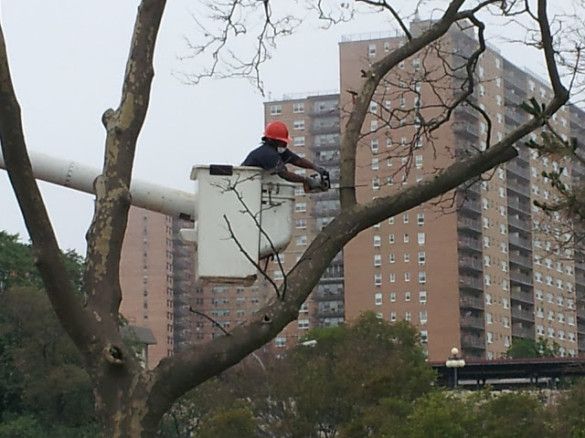An Upside To All That Snow: Soil’s Salt Levels Dropping From Post-Sandy High, Meaning Greener Spring Ahead

Residents of Manhattan Beach weren’t the only ones affected by Superstorm Sandy in that area. Jonathan Pywell, the director of forestry for New York City Parks Department, told community members during a meeting held by the Manhattan Beach Community Group that many of the trees in their area were going to be removed because of damages they sustained during the storm.
“The trees here were devastated,” Pywell said. He then explained that after the storm they had inspected the area and decided to remove 250 trees. “And it sounds like a lot. Well, it is.”
Sandy’s surge doused all of Manhattan Beach, and while many recall the word “surge” as the point of destruction, for the trees in the neighborhood the true damage happened after. As the water seeped into the soil, the salt went to work on the roots, killing much of them. Pywell and his team of six (and only six) use a percentage scale to determine how thorough the damage is. Anything below 50 percent is considered likely to die, at which point the tree has to be removed.
“We’re trying to find a balance between saving trees and public safety,” Pywell told the community members, explaining that once a tree dies there’s a chance of it coming down on people and property. “The reality is there’s a fine line we have to travel.”
The residents in the audience had no doubt witnessed tree removals in the area since the removal process picked up the pace a few months ago. Out of the 250 trees that were slated for removal – using a roofing nail to indicate the unlucky trees – 75 have already been removed. The 180 that are left will be removed over the course of the year.
But the news isn’t all bad. Pywell told Sheepshead Bites that because of all the rain and snow over the winter season, some of the salt left behind by the storm is being washed away.
“What we’re finding is the sites we sampled have less salt,” he said. Just how extensive this reduction may be is still unclear. Pywell and his team will have to first conduct another inspection of the area (as well as other areas in Brooklyn, as his team serves the entire borough) before he will know for sure how much salt has been removed.
Many residents were concerned that the removal of so many trees would leave the neighborhood barren and ugly. But Pywell explained that they are working on replacing the trees in the area. And the city is also still giving away trees for free. And as the city and Pywell begin to replace the trees, they plant with the idea that another storm will come.
“Diversity is important for resiliency,” he said and explained that the majority of the trees in the area were London Plain trees, a type that is especially vulnerable to salt water. And so he said that the city would replace removed trees with ones that can deal with “wet feet,” or a mild exposure to salt water.
“This area could potentially flood again,” he said. “I know you don’t want to hear that.”




